'For all practical purposes, the game ended at the break. The Irish bowlers had neither the pace nor the skill to compete against the Indian line-up; the lack of swing further blunted any edge they could have brought to the contest.'
Prem Panicker's magical prose... on the India-Ireland encounter.
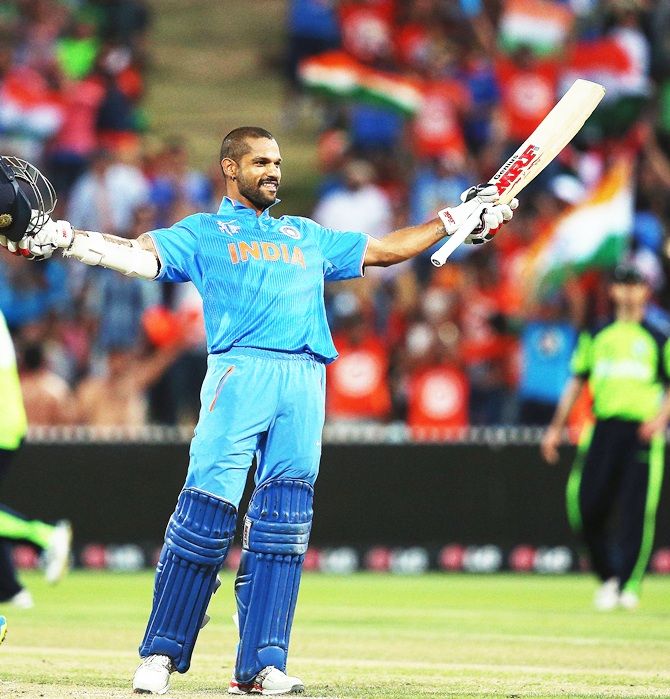
In his essay on Ireland in the book Second XI: Cricket in The Outposts, Tim Wigmore describes a scene in the Ireland dressing room on St Patrick's Day (March 17), 2007.
At Sabina Park in Kingston (Jamaica) that day, the Irish chose to field first in their Group D World Cup game. Improbably, they bowled out a Pakistan team boasting Imran Nazir, Mohammed Hafiz, Younis Khan, Mohammed Yousuf, Inzamam-ul Haq and Shoaib Malik in the batting line-up, for just 132 runs.
At the half-way mark, opportunity loomed. Ireland had a chance to defeat a Test nation and former champion and to knock Pakistan out of the competition altogether. More crucially, a win would see them progress into the knock-out round, in less than a year after making its ODI debut.
But opportunity, to those who don't cross its path often, can be a dead-weight. At the changeover, the Irish felt its paralysing pressure.
Wigmore describes the scene: The team frozen by that spectre of the possible, and their captain David Trent Johnson 'bounding around the changing room, topless and with a look of raw intensity in his eyes.'
In course of a 'Churchillian' speech, Johnston told his team of the consequences of failure -- they would go back to their mundane lives as teachers, postmen, farmers and, in his own case, a seller of fabric. He said:
'Now we have a chance to go to the Super 8s. We have a massive f***ing chance to stay in the West Indies for an extra four weeks. It is up to every single one of us, and see how much we want to f***ing stay here. I can promise you it’s gonna be tough out there.'
The poignance of those words is unmissable. Since making its ODI debut on June 13, 2006 against England at Belfast, the Irish had played a mere seven more international games, none of them against a top side, till they arrived in the West Indies for the World Cup.
Having managed to get a foot inside the big tent, they were desperate to prolong their stay for as long as they could -- for, in common with all Associate nations, they could never know when their next chance would come.
In the eight-year interregnum, that desire has sharpened, with an added garnish of ambition. The Irish seem no longer content to 'stay' -- they set out to compete, show that they want to belong.
In a game of two distinct halves against India at Hamilton today (March 10, 2015), that drive was the most visible feature of their performance. Out-matched with bat and ball, the Irish lost badly – but were not humiliated in the way the English, seeded number one going into this competiton, were yesterday against Bangladesh.
Ireland won the toss and batted first on a flat pitch in the centre of a ground the biggest boundary of which was 74 metres and the smallest, a laughable 53 metres. The intent was to bat big and use the weight of runs to lend a measure of menace to their fairly ordinary bowling line-up.
India's bowling template for this Cup has been carved in stone -- ten sharp overs of pace and bounce at the start, with Ravichandran Ashwin's looping, turning off-breaks to raising the pressure further from the 11th over.
In their first game after crossing the Tasman Sea, that plan proved a non-starter on a pitch that neutered both pace and bounce and produced no swing.
Irish openers Paul Stirling and William Porterfield waded into the bowlers, taking 15 off Yadav's first two overs. When Mohit Sharma replaced him ahead of schedule, the Irish took him for 18 off three.
At the other end, Mohammed Shami was only marginally more effective, his first four overs going for 23 as the openers peppered the short boundaries in hitting up 60/0 in the first ten -- the best performance by any team against India in the World Cup thus far.
Cue M S Dhoni, the eminence grise of this young outfit. The captain has been visibly proactive throughout the tournament; here, he stepped up to ease the burden on his under-pressure bowlers.
Sussing out that the conditions resembled those in his sub-continental backyard, Dhoni switched to Plan B, his personal favorite: Take the pace off the ball and the oxygen out of the game.
Dhoni used rapid rotation to protect his bowlers. As each bowler came in for tap, he packed him off to the outfield for rest and rehabilitation and combined four -- Shami, Yadav, Sharma and Jadeja -- inside the first 10 overs.
The bowlers operated off a common template: use the width of the bowling crease to create sharp angles into the batsman from a tight line around off; eschew lengths on the short side and focus on denying the Irish top-order with its bevy of left-handers room for free arms and clean hits.
Giving the tactic teeth was a field set to squeeze: Slip (often backed by leg slip), point, mid off, mid on, all inside the ring with a sweeper in support and a mid on mostly inside the ring to prevent pressure-relieving straight pushes.
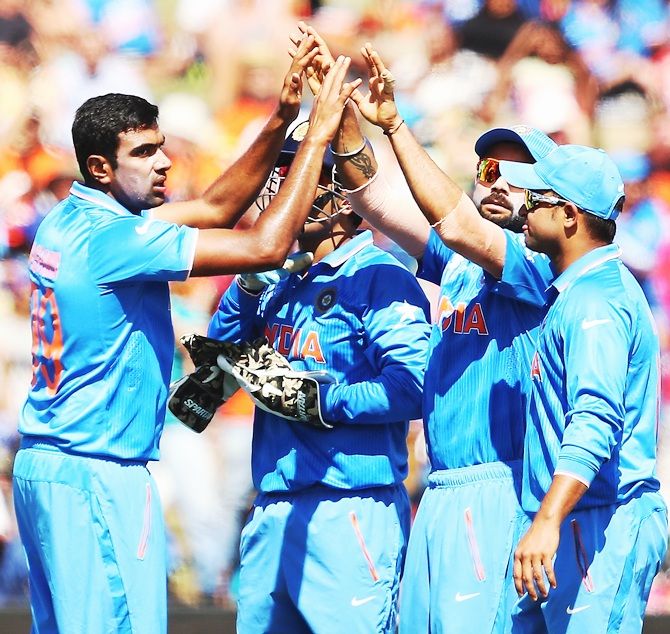
The star of the bowling show was Ashwin. For the first time in this tournament he came in to bowl at openers -- batsmen who, what's more, were stroking with the confidence of a healthy run rate. It must have been tempting for the off spinner to revert to flat, quick, run-saving bowling -- but Ashwin's bowling held its shape.
He flighted and looped balls impregnated with considerable spin; his length and control remained immaculate. Dhoni, counter-intuitively, used him in an extended 7-over spell, eschewing the temptation to hold overs back for a possible batting blitz in the second half of the Irish innings.
The run-progression tells the story of Ashwin's bowling: When he came in to bowl in the 11th, Ireland was 60/0. In the next ten overs, he had applied the brakes so vehemently that the batting side managed just 36 runs.
To add icing, Ashwin held one subtly back and spun it hard enough to force Stirling into a mishit drive that ended up as a simple catch to Rahane at long off.
The pressure the offie applied allowed Raina to bowl with relative freedom at the other end. To his credit the part-timer adhered rigidly to the overall plan, taking out Ed Joyce's stumps when the former England left-hander tried to manufacture a cut to a ball on the stumps that hurried in with the arm.
When Ashwin's remarkable first spell (7-1-16-1) ended at the 25-over mark, he had effectively changed the contours of the game. At 60/0, Ireland with its big hitting middle order batsmen were looking at 300 or more; when Ashwin walked off for some rest, the batting side had managed just 53 more, for the loss of two.
Ashwin had reeled the game back and forced the batting side to rethink.
Dhoni handled his other resources with mathematical precision, combining Rohit Sharma, Suresh Raina and Ravi Jadeja in bursts to push Ireland ever further off course.
When Ireland took its batting power play at the start of the 36th over (171/3) to get some wind under its sails heading into the death, Dhoni brought Ashwin back on, then switched his three seamers on in the final ten overs in a counter-intuitive attacking role.
The Porterfield-Stirling combination at the top of the order put on 89 for the first wicket (easily the most by any team against India in this tournament), and Niall O'Brien played a beautifully paced hand of 75 off 75 balls that formed the mid-innings core, but couldn't find anyone with the skill to bat around him and withstand the steady squeeze applied by the Indians.
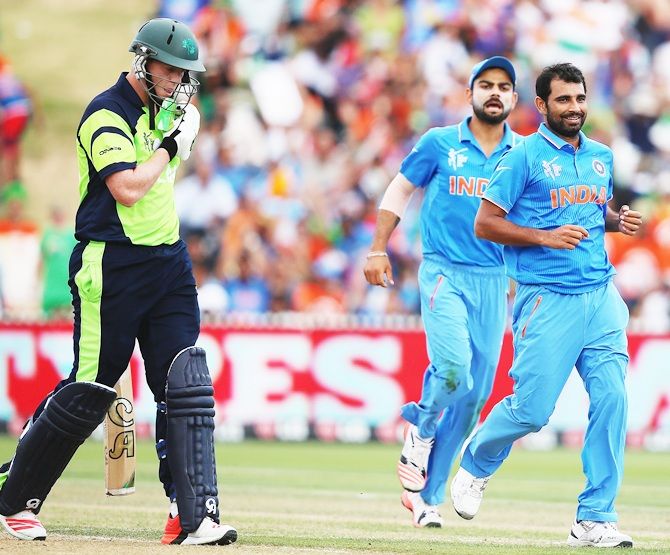
A key moment was the entry of Kevin O'Brien at the fall of the 4th wicket, but the big-hitting right-hander managed to last just one ball before Mohammed Shami got one to seam away late from a perfect line on off, to find the edge of O'Brien's driving bat.
That wicket was the trigger of a batting implosion, and though the last three wickets added 33 after Niall O'Brien, buckling under the pressure of having to do it all alone, was 7th out at 226, the final total of 259 -- the highest by any side against India in the Cup -- was still a good 50 runs too light to apply any sort of pressure on the Indian batting.
Given the benign pitch and short boundaries, the Indian bowlers as a unit did superbly to bowl the opposition out inside the distance, for the fifth time in as many games.
But on balance, the credit for the bowling performance goes to Dhoni, whose brilliant handling ensured that no one bowler ever came under sustained pressure.
Also, noticeably, the Indian captain refused to back off even when his bowlers were under pressure, maintaining attacking catchers and tight rings throughout the innings with a relentlessness the inexperienced Irish were not equipped to counter.
For all practical purposes, the game ended at the break. The Irish bowlers had neither the pace nor the skill to compete against the Indian line-up; the lack of swing further blunted any edge they could have brought to the contest.
There were two moments, early on, that could have triggered some tremors and forced the Indians into a fight. Off the last ball of the 3rd over, John Mooney went around the wicket and produced an angled delivery on a full length that cramped Dhawan's punch; the ball came back to the bowler at an easy waist height but Mooney failed to check his follow through sufficiently to control the return catch.
The bowler suffered further mortification when, in the 7th over, Dhawan slashed at a wide delivery and Porterfield, diving away at backward point, failed to cling on after a bit of a juggle.
At that point -- 24/0 on the board and Dhawan seemingly unsettled -- the Irish might have assumed that a breakthrough was imminent, but any such optimism lasted for just two more deliveries.
Off the fifth ball of that over, Rohit Sharma leaned into a caressing cover-drive played with an almost pedantic correctness -- full forward press, ball meeting the middle of the bat rgith under the batsman's eye. To the next ball, Rohit effortlessly extended into an off-drive, hitting up from under and powering the ball into the stands behind long off.
Dhawan, to the first ball of the 7th over, shimmied a bit down the track to drill a fierce off drive, then stayed back to the next delivery which was angled away from him and blasted a square drive in front of point.
Both batsmen had by then figured out that the pitch afforded them the sub-continental luxury of a pre-determined forward press -- and from that point on, there was nothing in it. Rohit drove, cut, glided and pulled with grace and elegance; Dhawan slashed and shredded with cruel intent.
Their contrasting strokeplay formed a percussive counterpoint to the music and driving chants of stands overflowing with blue-clad supporters, and the atmosphere turned distinctly carnival. And in that cauldron, the Irish bowlers took on the helpless mein of lambs in an abbatoir.
The Irish continued to bowl with determination and throw themselves around the field, but to no avail -- 73/0 at the end of the mandatory opening power-play almost doubled to 144/0 at the end of 20 as the openers competed to pull off shots of audacious authority.
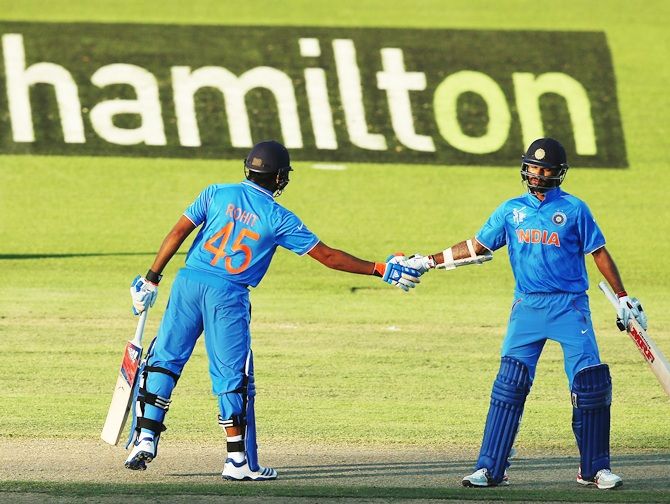
By the time Rohit (64 off 66 with three fours and three sixes) got himself out, chopping Stuart Thompson onto his stumps in an attempt to get cute with a glide to third man, the score had rocketed to 174 in 23.2 overs -- the highest ever by an opening pair for India in World Cups.
Virat Kohli walked in and played a supporting role, restraining himself for nine scoreless deliveries as Dhawan surged to his second century of the tournament with a single off the fifth ball of the 27th over (100 off 84 balls, 11 fours and five barnstorming sixes).
As soon as his partner reached the landmark, Kohli shifted gears, slamming Thompson high over long on -- his 3rd scoring stroke in 14 deliveries, the previous two being checked singles).
Dhawan fell two deliveries later, attempting to convert a length ball on his off stump into a hoist over the leg side but managing only to miscue over cover; Porterfield -- who in common with the rest of his team fielded with a vigor that belied the hopelessness of the task -- turned at cover, ran back with the ball coming over his shoulder, and held perfectly.
From that point, Kohli and Ajinkya Rahane combined, with deft placements and running between wickets punctuated by authoritative drives, glides and pulls, to close the game out (260/2 in 36.5 to seal a win with eight wickets and 79 deliveries in hand) with all the restful ease of neighbourhood friends walking the dog home late on a balmy evening.
DON'T MISS PREM'S EARLIER MATCH REPORTS!








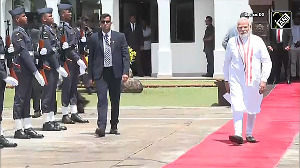
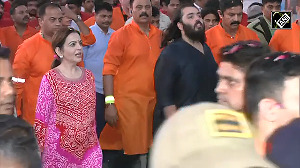

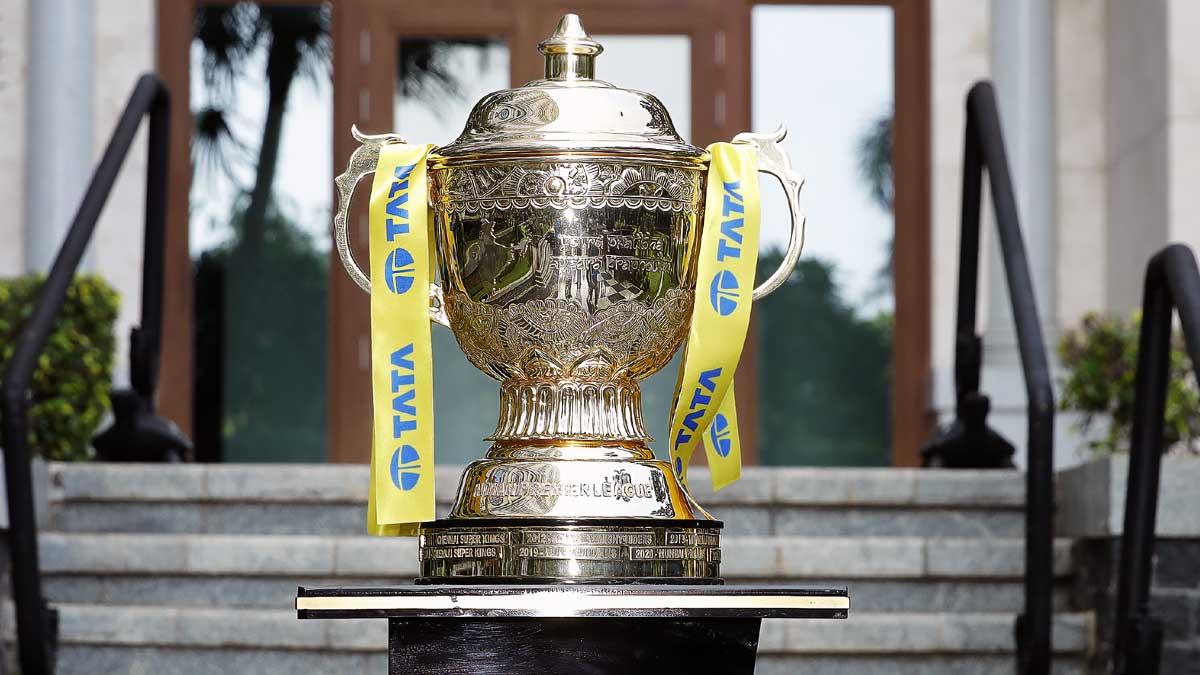
 © 2025
© 2025